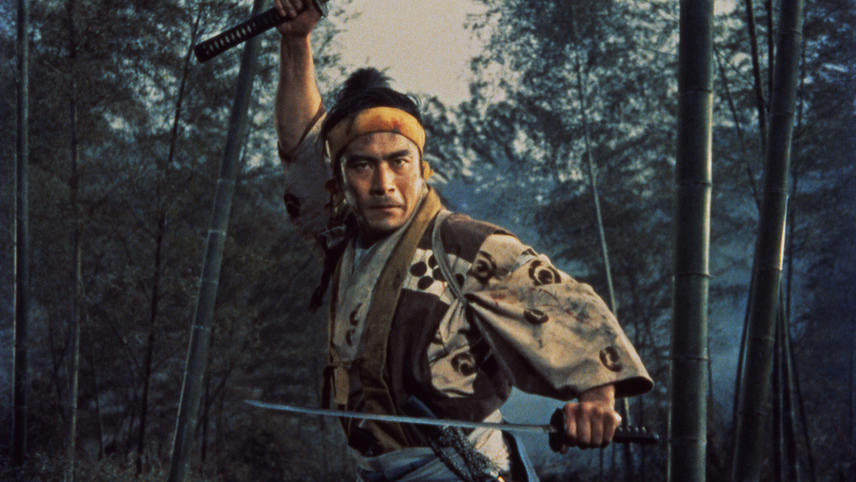journalofserviceclimatology.org – Released in 1955, Samurai II: Duel at Ichijoji Temple is the second film in Hiroshi Inagaki’s celebrated Samurai Trilogy, which chronicles the legendary life of Miyamoto Musashi. This installment continues Musashi’s journey from a wandering swordsman to a refined and disciplined warrior, focusing on his internal and external conflicts as he hones his skills and battles his growing list of rivals. With intense action, philosophical depth, and emotional growth, Samurai II stands as a crucial chapter in Musashi’s transformation into one of Japan’s most revered figures.
Plot Overview: Musashi’s Path to Mastery
Picking up where Samurai I: Musashi Miyamoto left off, Samurai II follows Musashi as he continues to search for wisdom and perfect his swordsmanship. Now widely known for his skill with the sword, Musashi seeks to further his martial abilities by challenging the Yoshioka school, a prominent and powerful martial arts dojo. His ambition leads him to a pivotal duel with the school’s leader, Seijuro Yoshioka, and sets the stage for one of the most famous showdowns in Japanese history.
As Musashi prepares for the duel, he faces both personal and philosophical challenges. He must navigate the tension between his desire for martial perfection and the need for inner peace. Meanwhile, he struggles with his evolving relationship with Otsu, a woman who loves him but is often left behind as Musashi pursues his warrior’s path. These emotional complexities add depth to the narrative, making Musashi’s journey as much about self-discovery as it is about achieving martial mastery.
Themes: The Conflict Between Violence and Enlightenment
At the heart of Samurai II is the ongoing tension between Musashi’s quest for dominance in the martial arts and his evolving understanding of what it means to be a true samurai. While he seeks to improve his swordsmanship, he is also beginning to grasp the limitations of living solely for the sake of battle. Musashi’s encounters with wise mentors and fellow warriors help guide him toward a deeper understanding of the Bushido code, where honor, discipline, and compassion are equally as important as combat skills.
The film explores the paradox of Musashi’s ambition: to be the greatest swordsman in Japan, he must overcome his own desire for violence. His battles are not just against physical opponents but against his own inner demons, making Samurai II a philosophical exploration of what it means to live by the sword.
Action and Cinematic Excellence
While Samurai II delves into deeper philosophical themes, it is also packed with intense and beautifully choreographed action sequences. The film’s central duel at Ichijoji Temple is a masterclass in tension and pacing, as Musashi faces overwhelming odds against dozens of skilled opponents. The scene is iconic for its staging and execution, exemplifying the samurai genre’s blend of action and artistry.
The duel at Ichijoji Temple is a turning point in Musashi’s life, not only solidifying his reputation as an unbeatable swordsman but also forcing him to confront the personal costs of his path. The battle’s aftermath leaves Musashi with a greater understanding of the burden that comes with his quest for supremacy.
The cinematography throughout the film is visually striking, capturing both the serene beauty of feudal Japan’s countryside and the chaos of combat. Inagaki’s direction maintains a perfect balance between the stillness of Musashi’s internal struggles and the kinetic energy of his duels.
The Evolution of Toshiro Mifune’s Musashi
Toshiro Mifune’s portrayal of Musashi Miyamoto in Samurai II is a study in nuance. As Musashi matures from a brash, headstrong fighter into a more contemplative warrior, Mifune’s performance evolves as well, showcasing his versatility as an actor. Musashi is still fearsome in battle, but Mifune brings a subtle depth to the character’s growing self-awareness and emotional complexity.
The relationship between Musashi and Otsu, played by Kaoru Yachigusa, adds an emotional layer to the film, highlighting the tension between personal desires and the pursuit of higher ideals. Otsu’s love for Musashi remains a central subplot, though Musashi’s dedication to his path often leaves her in emotional turmoil, emphasizing the sacrifices that come with a life devoted to the sword.
Reception and Legacy
Samurai II: Duel at Ichijoji Temple was met with critical acclaim upon its release, praised for its thoughtful storytelling, dynamic action, and Mifune’s compelling performance. While it is a middle chapter in the trilogy, it is often regarded as one of the most important because of its depiction of Musashi’s inner struggles and the evolution of his character.
The film also helped solidify the Samurai Trilogy as one of the most important contributions to the samurai film genre. Its influence is far-reaching, inspiring future generations of filmmakers, including renowned directors like Akira Kurosawa and Quentin Tarantino. Musashi’s story of personal growth, discipline, and the search for enlightenment remains relevant and compelling for audiences worldwide.
Conclusion: A Samurai’s Journey Continues
Samurai II: Duel at Ichijoji Temple is a powerful continuation of Musashi Miyamoto’s journey from brash swordsman to enlightened warrior. The film masterfully blends action, drama, and philosophy, making it not just a tale of swordsmanship but a meditation on the nature of power, honor, and personal growth.
As the second entry in Hiroshi Inagaki’s Samurai Trilogy, it serves as a crucial turning point in Musashi’s evolution, setting the stage for the final chapter in his legendary story. Whether you are drawn to its intense combat sequences or its exploration of the human spirit, Samurai II remains an essential work in the history of samurai cinema.
